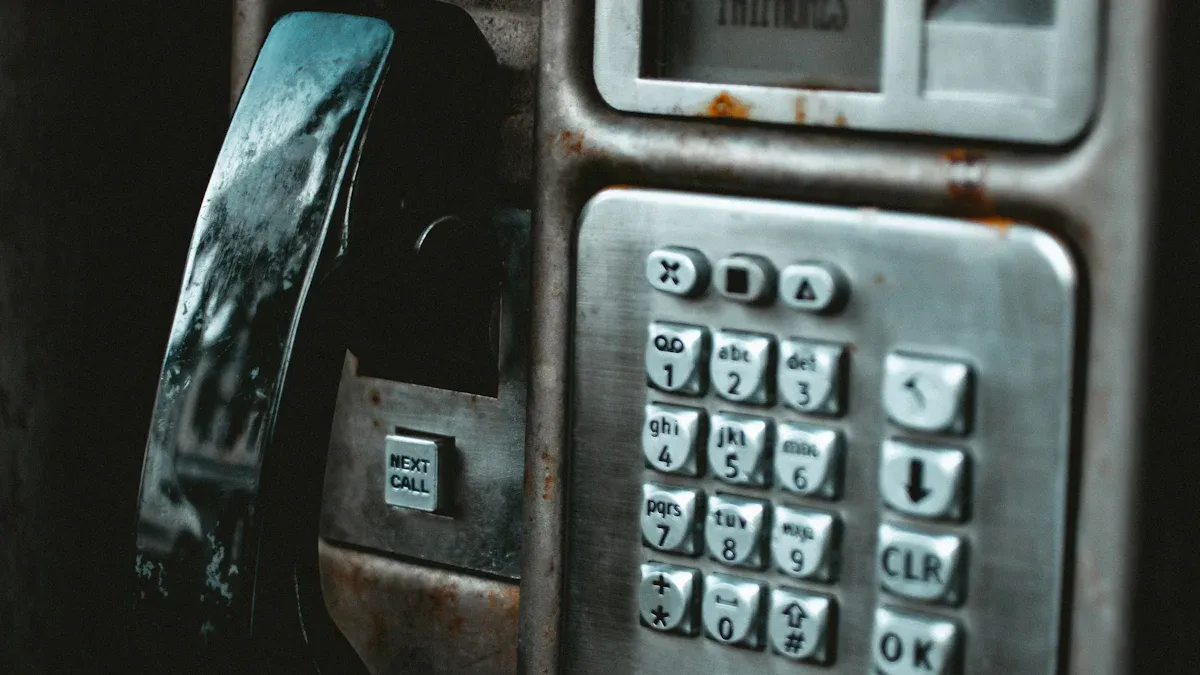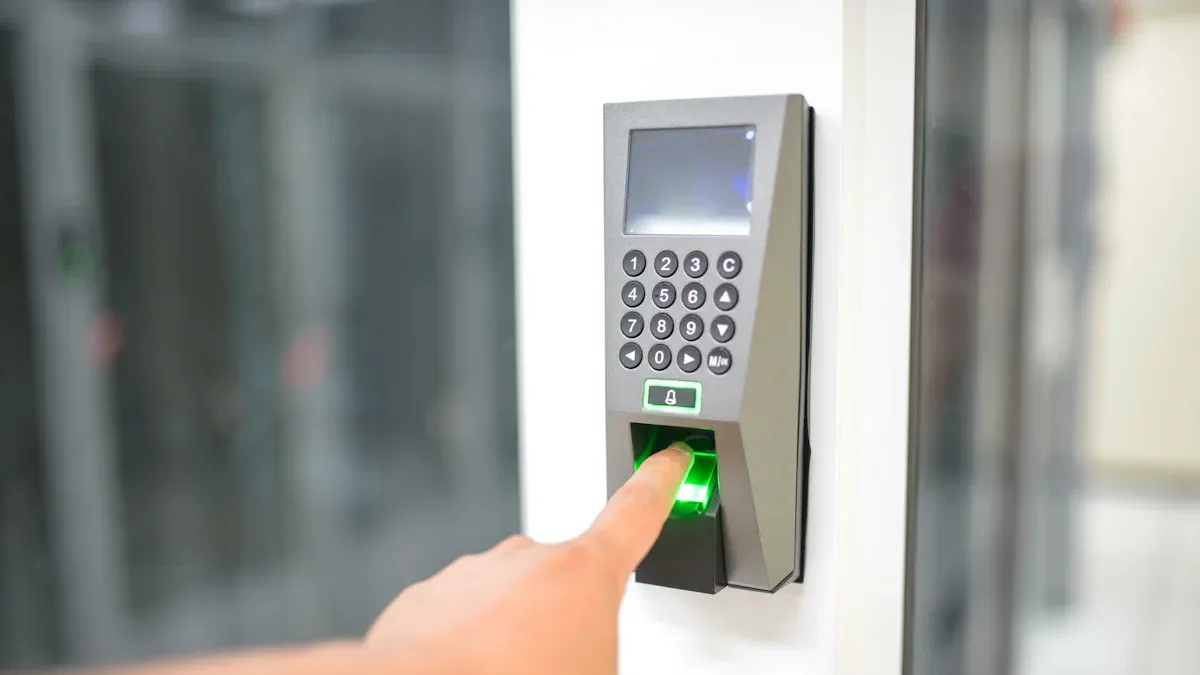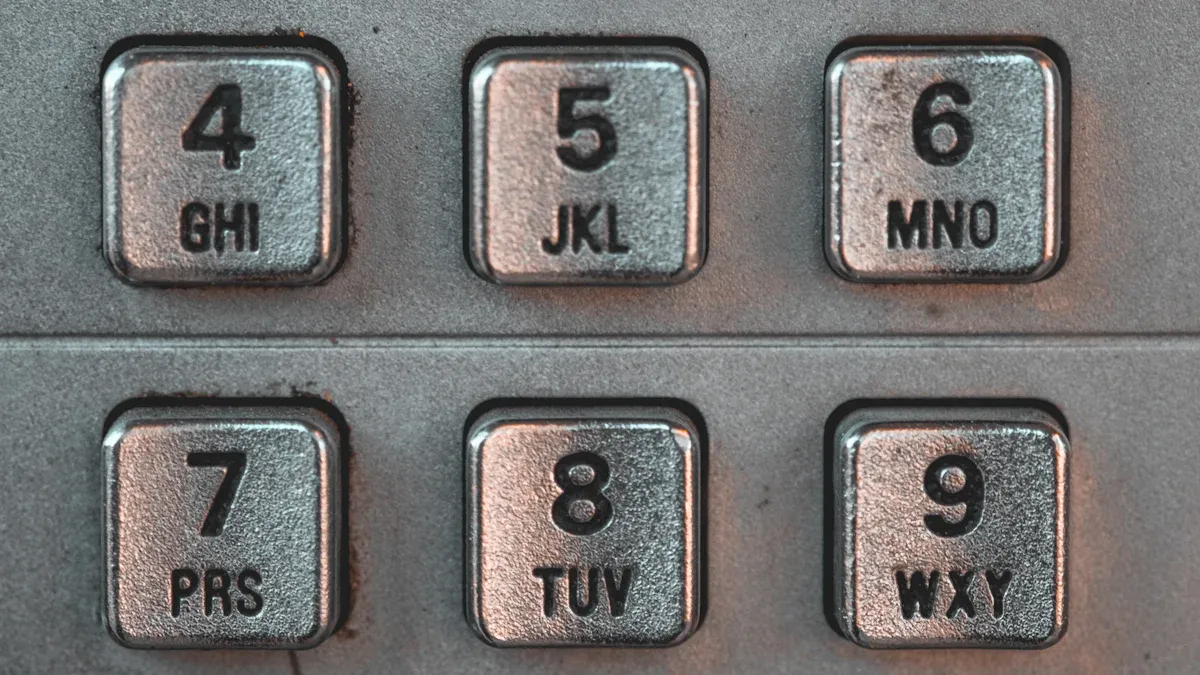
The best way to clean an outdoor industrial keypad involves gentle but thorough care. You need to use cleaning methods that protect the keypad from harsh chemicals and residue. Select products that do not damage the industrial surface or the internal parts. Always avoid improper cleaning agents that could leave harmful buildup. With the right approach, you keep the outdoor industrial keypad in top condition and extend its lifespan.
Key Takeaways
- Always power down and unplug your outdoor industrial keypad before cleaning to protect yourself and the device.
- Use gentle tools like microfiber cloths, cotton swabs, and compressed air to remove dirt without damaging the keypad.
- Clean with 70% isopropyl alcohol or mild soap solution, avoiding harsh chemicals and excess moisture that can harm the keypad.
- Disinfect by wiping with EPA-approved cleaners on a cloth, never spray directly to prevent liquid damage.
- Dry the keypad thoroughly after cleaning and inspect it for damage before reconnecting power to keep it reliable.
Preparation
Before you start to clean your outdoor industrial keypad, you need to prepare both your workspace and your tools. Good preparation helps you protect the hardware and ensures a safe, effective cleaning process.
Gather Tools
You should collect all the necessary items before you begin. Here is a checklist to help you organize your cleaning supplies:
- Isopropyl alcohol (at least 70%)
- Microfiber cloth
- Compressed air canister
- Cotton swabs
- Mild soap
- Soft cloth
Tip: Always use lint-free cloths and non-abrasive tools. This prevents scratches and keeps your hardware in top condition.
Having these tools ready will make the cleaning process smoother. You will avoid searching for supplies while your hardware is exposed.
Power Down
Always turn off the keypad or disconnect it from its power source before you clean. This step protects both you and the hardware from electrical hazards. If your keypad connects to other industrial hardware, make sure you follow the correct shutdown procedure. Unplugging the device also prevents accidental key presses and data loss.
Check Guidelines
Before you touch any hardware, review the manufacturer’s instructions. Many companies provide specific cleaning recommendations for their products. These guidelines help you avoid using the wrong cleaning agents or damaging the keypad. If you cannot find the manual, check the manufacturer’s website for support documents.
Note: Following official guidelines ensures you do not void any warranties or damage sensitive hardware components.
Proper preparation sets the stage for a safe and thorough cleaning of your outdoor industrial keypad. When you take these steps, you protect your hardware and extend its lifespan.
Remove Debris

Removing loose dirt and grime from your outdoor industrial keypad is a crucial first step. You want to keep your hardware free from buildup so it works reliably in any environment. Start by focusing on the areas where dust and debris collect most often, such as around the keys and in the crevices.
Use Compressed Air
Compressed air cans give you a quick and effective way to clean your hardware. Hold the can upright and aim the nozzle at the spaces between the keys. Short bursts of air will push out dust and small particles without touching the surface. This method works well for outdoor industrial keypads because it reaches tight spots that brushes cannot access.
You can compare compressed air cans and electric air dusters using the table below:
| Feature | Compressed Air Can | Electric Air Duster |
|---|---|---|
| Portability | High | Low |
| Power Requirement | None | Yes |
| Airflow Consistency | Decreases with use | Consistent |
| Environmental Impact | Less eco-friendly | More eco-friendly |
| Precision | High | Moderate |
| Best Use | Occasional, portable | Frequent, thorough |
Compressed air cans are best for occasional cleaning and when you need to move between different hardware locations. Electric air dusters work well if you clean your hardware often and have access to power.
Tip: Always disconnect the keypad before using compressed air. This prevents accidental key presses and protects your hardware from electrical damage.
Soft Brush or Duster
If you see stubborn dirt and grime that air cannot remove, use a soft brush or duster. Gently sweep the surface and the spaces between the keys. Choose a brush with soft bristles to avoid scratching the hardware. Move the brush in one direction to lift debris away from the keypad.
Follow these steps to maintain your hardware:
- Clean your keypad every 1-2 months.
- Increase cleaning frequency in high-traffic areas.
- Disconnect the hardware before cleaning.
- Gently shake the keypad to loosen debris.
- Use compressed air or a brush to clear dust.
- Wipe the surface with a damp cloth, keeping moisture away from internal parts.
- Apply light oil after cleaning to protect against moisture.
Regular cleaning keeps your outdoor industrial keypad in top shape and extends the life of your hardware.
Clean Outdoor Industrial Keypad

Alcohol and Cloth
Start by cleaning the surface of your outdoor industrial keypad with isopropyl alcohol and a microfiber cloth. Choose a 70% isopropyl alcohol solution. This concentration provides effective cleaning and disinfection while protecting your hardware from damage. You should avoid higher concentrations, which evaporate too quickly and may not disinfect as well.
| Concentration | Properties | Recommended Use | Safety Considerations |
|---|---|---|---|
| 70% IPA | Contains 30% water, slower evaporation, increased contact time, less flammable | Best for surface sanitation and disinfection, including electronic devices and industrial surfaces | Safer for electronics and less flammable, effective disinfectant |
| 99% IPA | Very low water content, rapid evaporation, effective solvent for sticky residues and grease | Used for cleaning water-sensitive items and removing grime, less effective as disinfectant | More flammable, faster evaporation can reduce contact time, less safe for delicate electronics |
Dampen the microfiber cloth with alcohol. Do not soak it. Gently wipe the keypad surface, focusing on areas with visible dirt or fingerprints. Microfiber cloths work better than traditional cloths because they trap dust and particles without scratching the rubber or leaving lint behind. This keeps your hardware looking new and prevents damage to the rubber keypad.
Tip: Always power down your hardware before you clean. This step protects both you and your equipment.
Cotton Swab for Edges
Use cotton swabs to clean the edges and crevices of your keypad. Dip the tip of the swab in isopropyl alcohol, then squeeze out excess liquid. Cotton swabs reach into tight spaces where cloths cannot go. Their soft heads prevent scratches on the rubber and plastic, and their shape allows you to target dirt in small, hard-to-reach areas.
Cotton swabs absorb just enough alcohol to clean without dripping. They help you remove grime from the sides of keys and the spaces between them. This method works especially well for outdoor industrial keypads, which often collect dust and debris in these spots.
- Cotton swabs have soft, non-abrasive heads that protect delicate surfaces.
- Their size and shape make them ideal for cleaning crevices and edges.
- They work well with isopropyl alcohol and do not leave behind dust or fibers.
Note: Replace the swab as soon as it gets dirty. This prevents spreading grime across your hardware.
Soap Solution Option
If you cannot use isopropyl alcohol, prepare a mild soap solution. Mix a few drops of gentle soap with water. Dampen a soft cloth with the solution, then wring it out thoroughly. Wipe the surface of the rubber keypad gently. Avoid letting water seep into the hardware. Soap solutions work well for cleaning rubber surfaces, especially if you need to clean rubber keypad areas that have sticky residue or stains.
After cleaning, use a dry microfiber cloth to remove any moisture. Make sure the keypad is completely dry before you reconnect power.
Alert: Never soak your hardware or scrub aggressively. Excess moisture can damage internal components, and harsh scrubbing can wear down the rubber or plastic.
By following these steps, you keep your outdoor industrial keypad clean and functional. You protect the rubber and hardware from damage, and you maintain the reliability of your industrial equipment.
Disinfect Keypad
EPA-Approved Cleaner
You need to use an EPA-approved disinfectant when you clean and disinfect outdoor industrial keypads. These products meet strict standards for killing germs on high-touch surfaces. Always check the label to confirm the disinfectant is safe for electronics and non-porous materials. Using the right disinfectant helps you remove bacteria and viruses without harming the keypad.
When you disinfect, pay attention to the contact time. Disinfectants need to stay wet on the surface for a certain period to work well. This time can range from 30 seconds to over 30 minutes, depending on the product and the type of germs. For example:
- Some disinfectants require at least 20 minutes to kill tough bacteria like Mycobacteria.
- Most products list the exact contact time on the label.
- The surface must remain wet for the full contact time to ensure effective disinfecting.
Tip: Always read the instructions on your disinfectant. Following the recommended contact time ensures you kill germs and protect your equipment.
Wipe, Don’t Spray
Never spray disinfectant directly onto your outdoor industrial keypad. Spraying can cause several problems:
- Liquid can seep into the keypad and damage internal parts.
- Chemicals may corrode the surface or cause the material to break down over time.
- Sprays can create airborne particles that irritate your eyes, skin, or lungs.
- Runoff from sprays can harm the environment and pollute water sources.
Instead, apply the disinfectant to a soft, lint-free cloth. Wipe the keypad gently, making sure you cover all high-touch surfaces. Avoid letting excess liquid drip into the device. This method keeps the disinfectant where you need it and protects both you and the environment.
| Method | Safety for Keypad | Health Risk | Environmental Impact | Effectiveness |
|---|---|---|---|---|
| Wiping | High | Low | Low | High |
| Spraying | Low | High | High | Moderate |
Alert: Always follow the manufacturer’s instructions for disinfecting your keypad. Wiping with a disinfectant cloth, not spraying, helps maintain the keypad’s longevity and keeps it working well.
Manufacturers design industrial keypads to resist many chemicals, but only when you use them correctly. Never submerge or dip the keypad in disinfectant. Always wipe the exterior and avoid getting liquid inside vents or seams. Following these steps prevents damage and keeps your keypad reliable for years.
Drying and Final Steps
Wipe Dry
After you finish cleaning and disinfecting your outdoor industrial keypad, you need to dry it carefully. Use a soft, lint-free cloth to wipe away any remaining moisture. Make sure you reach all surfaces, including the spaces between the keys. Moisture left on the keypad can damage the hardware or cause it to malfunction. Take your time and check that the cloth absorbs all the liquid.
Tip: Never use a hair dryer or heat gun to speed up the drying process. High heat can warp the plastic or rubber and harm the internal hardware.
If you see any streaks or residue, gently buff the surface with a clean, dry cloth. This step helps you keep the keypad looking professional and ready for use.
Inspect and Test
Once the keypad is dry, you should inspect and test the hardware before restoring power. Careful inspection helps you catch problems early and keeps your system reliable. Follow these steps:
- Examine the keypad for any signs of physical damage, such as broken buttons or loose wires.
- Look for signs of tampering or vandalism that could affect security or usability.
- Check that the keypad remains weatherproof and durable after cleaning.
- Test each button to make sure it responds correctly.
- Replace any damaged or malfunctioning hardware right away to maintain system integrity.
- Integrate keypad inspection with your regular security monitoring to detect any irregularities.
Note: Regular inspections after you clean your hardware help you spot issues before they become serious problems.
When you finish these steps, you can reconnect the power and return the keypad to service. A thorough drying and inspection process ensures your outdoor industrial keypad stays dependable and safe for daily use.
What to Avoid
Cleaning outdoor keypads requires careful attention. You want to protect your industrial equipment and keep it working for years. Avoid these common mistakes to ensure your rubber and industrial metal keypads stay in top condition.
Harsh Chemicals
Never use harsh chemicals or strong solvents on your rubber keypads. These products can break down the rubber surface, causing it to crack or fade. Industrial keypads often have special coatings that protect against weather and wear. Strong cleaners can strip away these coatings and leave the keypad exposed to damage. Stick to isopropyl rubbing alcohol or a mild soap solution. These options clean well without harming the rubber or the industrial surface.
Using water instead of isopropyl rubbing alcohol can leave moisture behind. This moisture may damage electrical circuits and reduce the functionality of your keypad.
Excess Moisture
Excess moisture is one of the biggest dangers when cleaning outdoor keypads. Water can seep into the device and stay trapped for hours or even days. This lingering moisture can harm the internal circuits and cause the keypad to stop working. Rubber keypads are especially sensitive to water because the material can absorb and hold moisture. Always use a damp—not wet—cloth, and never soak the keypad. Isopropyl rubbing alcohol evaporates quickly and does not leave moisture behind, making it the safest choice for cleaning.
Unapproved Disassembly
Do not take apart your industrial metal keypads unless the manufacturer gives clear instructions. Disassembling the keypad without approval can void warranties and expose delicate parts to dust or damage. Many rubber keypads have seals that keep out dirt and water. Breaking these seals can let debris reach the circuit board and impair the device. If you need to fix or deep clean your keypad, contact the manufacturer or a qualified technician.
Common cleaning mistakes to avoid:
- Using water instead of rubbing alcohol
- Failing to remove dirt and grime
- Scrubbing rubber surfaces aggressively
- Taking apart the keypad without approval
Careful cleaning keeps your industrial keypads reliable and extends their lifespan.
You can keep your outdoor industrial keypad in top condition by following a few key steps. Use proper tools and avoid harsh chemicals or excess moisture to prevent damage and extend the device’s lifespan.
- Regularly clean and disinfect the keypad with a soft, dry cloth and approved agents.
- Inspect for wear or damage and address issues promptly.
Always follow manufacturer maintenance guidelines, as improper cleaning can void warranties.
Consistent care helps you maintain reliable performance and reduces long-term costs.
FAQ
How often should you clean an outdoor industrial keypad?
You should clean your outdoor industrial keypad at least once every one to two months. If the keypad sits in a high-traffic area or harsh environment, increase the cleaning frequency to maintain performance and reliability.
Can you use household cleaners on industrial keypads?
You should avoid most household cleaners. Many contain harsh chemicals that can damage the keypad’s surface or internal components. Stick to isopropyl alcohol or a mild soap solution for safe and effective cleaning.
What should you do if liquid spills inside the keypad?
Immediately power down the keypad and disconnect it from any power source. Use a dry cloth to blot excess liquid. Contact the manufacturer or a qualified technician for further inspection and repair.
Is it safe to use disinfectant wipes on rubber keypads?
You can use disinfectant wipes if they are labeled safe for electronics and do not contain bleach or strong solvents. Always wring out excess moisture before wiping and avoid letting liquid seep into the device.
Why does the manufacturer’s cleaning guideline matter?
Manufacturer guidelines help you choose the right cleaning agents and methods. Following these instructions protects your keypad from damage and keeps your warranty valid.
Post time: Jul-31-2025
